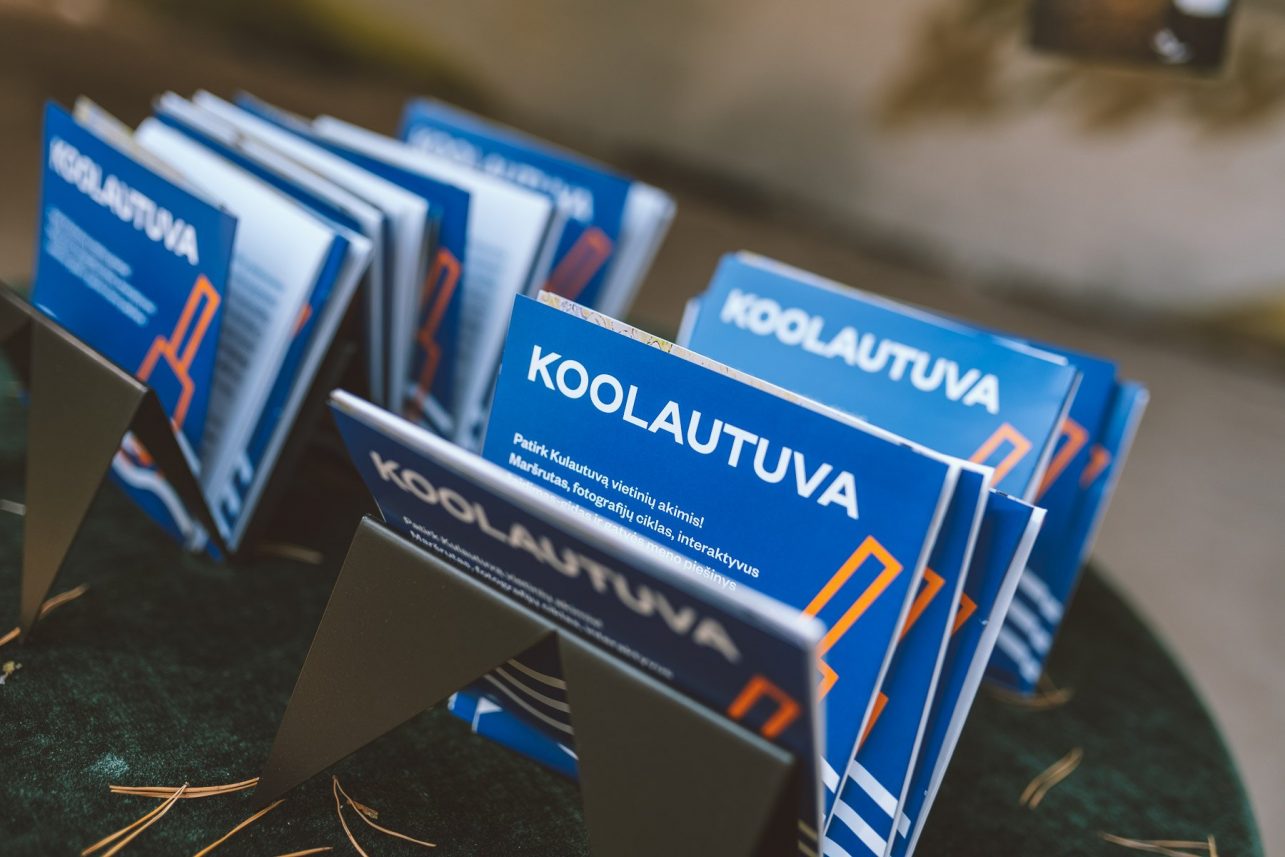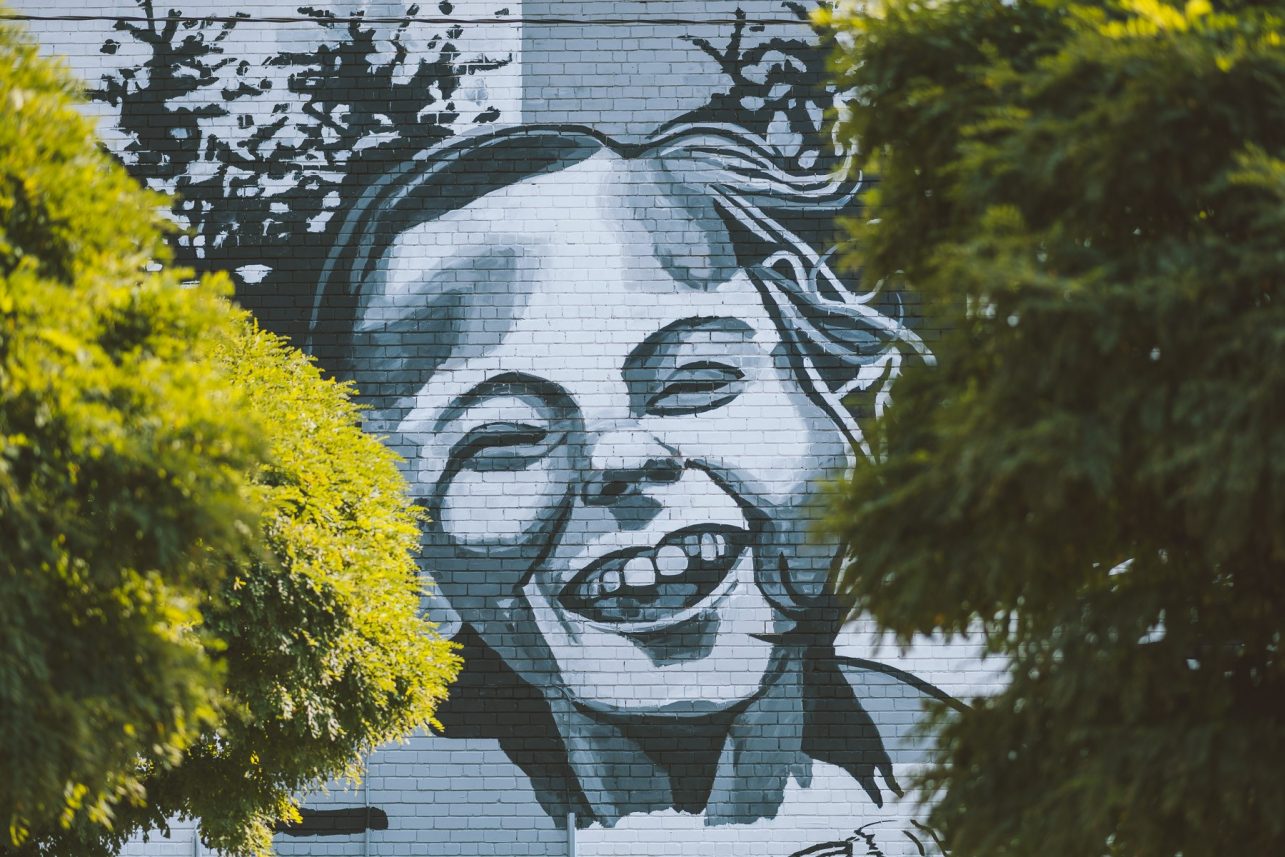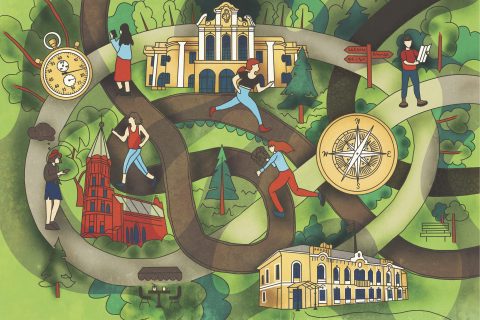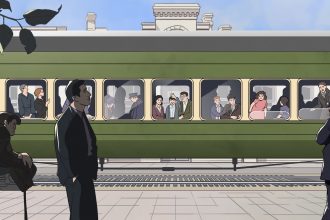More than a year ago, at the end of September, the Koolautuva project was born. This is an interactive game based on the map and the opportunity to choose your own adventure. By introducing the players to various stories, legends, and mythical creatures of the town, Koolautuva resurrects the former interwar period resort and actualizes this region here and now. The game is a part of the Kaunas 2022 program Contemporary Elderships, so the entire Kulautuva community also contributed to its content. I talked about the hints, course and content of the project with its creators: the new media researcher Gytis Dovydaitis, programmers Andrius Simanavičius and Paulius Padriezas.

How did the idea to create an interactive project about Kulautuva come about? What is the relationship of each of you with this little town?
Gytis: Kaunas 2022 invited me to create a project of Contemporary Elderships platform specifically for Kulautuva. I didn’t have much of a connection to the little town until then, although in 2018 I carried out another project with Kaunas 2022, also in Kulautuva, also based on a map, but during it we organized filming workshops and I gave lessons in the film school.
Andrius: I was surprised to hear that we will be working on a project about Kulautuva. I spent much of my childhood there. My God parents live in Kulautuva, so we would go visit them every weekend with my family.
Paulius: I had not visited Kulautuva before the project or heard any local stories, however, the offer to join the project was intriguing.
Tell us when was your team formed and how did the creative process develop?
G.: The start of this project can be traced to the work of architect Rasa Chmieliauskaitė because it was her who organized a photography workshop in the Kulautuva community. During the workshop, the architect created routes that were decorated with photographs. This is how the first map full of points appeared.
The beginning of my work is associated with the end of quarantine restrictions. Around April, I met with the community many times and refined the original map to the most important points. Once we had the final map, I asked people to tell me different stories about Kulautuva’s past. It was really nice that these meetings turned out to be therapeutic for members of this community. They shared stories they seemed to have long forgotten. After the meetings, I started to communicate with Andrius and think about how to implement this project technically. This is how the idea of interactive fiction was born. And later I worked on the texts.
P.: I joined a little later, a month before the presentation.
A.: I remember still coding the game on the day of the presentation [laughs].
G.: It was also magical when one night we went to try the game out for the first time. We were running around in the dark with our laptops in the forest [laughs].
Gytis, I know this is not the first interactive game you have contributed to. How are Ramybės mįslės (riddles of tranquility) different from Koolautuva?
G.: Ramybės mįslės is my solo project. It is fast, requires minimal resources, and is technically much more primitive. In the game, you have to solve a rebus, if you fail, you might lose. But in this project, you cannot lose because the aim is to navigate the player around Kulautuva so that they would experience local stories while walking. Although both games are based on true historical narratives, the material collected in the first case was quite fragmental from many different sources. Koolautuva is all about community initiative. During that half year of meetings old friendships recovered and new ones were made. The project has become a community building tool.
Andrius and Paulius, your contribution to this project is equally important. You have created a space where history opens up. Is this your first time creating a virtual game?
A.: This is not the first time we have created a game with Paulius, but it is the first one we have completed [laughs]. We thought about mobile apps, servers, but eventually the works would come to a halt.
Perhaps this project has led to the acquiring new professional skills?
A.: Paulius discovered a way to self-hack, how to work harder [laughs]. One day, he said, he had only slept for three hours because he didn’t cover his feet so that he could wake up after feeling cold and go back to work.
We also gained skills in working with maps. It was necessary to link the map to the location, the preselected points, and data that the phone needs to send, in order for the app to understand the exact location of the player.
While the action of the game takes place in virtual reality, in order to interact with it, one must be in the physical space, which is the content of the game. What is more important here: interactive knowledge of history or being in the city here and now?
G.: The game fits the ideals of Zuckerberg’s Metauniverse since a digital layer is lowered on the physical space. Ideally, when a player walks with the phone, the augmented reality would appear at the same time and all the characters would come to life around them. From a technical perspective, both the physical and digital layers are equally important, but from a functional point of view, the motive comes from the community. It responds to the desire to encourage people to walk around Kulautuva, so it can be said that being there physically is more important.
Why is an interactive format that uses technology an attractive way to introduce players to the history of the country?
G.: I chose the idea of interactive fiction because of its simple, easy-to-manage format. It’s a practical, user-friendly way to get to know the history. I also think that a modern man is very much spoiled by interactive stimulation. You need to come up with something truly original to intrigue them.
P.: Everyone loves stories. When a person can follow and control the story, there is more enthusiasm, the desire to move, to get to know Kulautuva.
A.: I liked our interface because the player can choose what to say. Other methods would not allow this.
You will probably agree that older people are often reluctant to use digital technology. What is the target audience for the game?
G.: Our target audience consists of younger visitors of the town and locals. It is quite ironic that the older members of the community questioned the success of the idea, thinking no one would want to walk around with a phone but then the same people walked around and played during the launch. It just proves that the interface of our game is not complicated at all.
Could we say this is an orienteering game?
G.: Probably not. Orienteering requires the player to be able to navigate the environment, and this game itself provides a map. I could compare Koolautuva to Dungeons & Dragons, only in Koolautuva you don’t fight, you just walk and talk.
Why did you choose a fragment of Laura Slavinskaitė’s mural Home for the website’s design?
G.: The drawing reveals the stories told during the game, so it perfectly illustrates the material of the project, and it’s also simply a good drawing.

It can be noticed that not only the element of the game helps to get involved in the history of Kulautuva, but also the picturesque literary language that takes the reader/player to the past. Was this task difficult?
G.: Thanks for the compliment. I wrote the texts myself, although the original idea was to entrust it to the people of Kulautuva. It was a completely new role for me because I don’t write or read fiction. Nevertheless, I tried to imagine what would be interesting to read. At the same time, I was intensively learning how to write fiction.
Another – invisible – language should not be forgotten when playing this game. Do you think programming language is also creative?
A.: Definitely not [laughs]. A programming language can be used to achieve creative results, but it is not itself creative, but rather based on strict logic. A semicolon or any other symbol out of place can damage the entire application. True, programmers who are given a more complex, larger task will each find a different way to accomplish it, and that is a kind of creativity. In this project, I see creativity in the search for design, because it was not an easy task. It is unfortunate that we had to pay more attention to the technical side instead of focusing on design.
A.: First, the page has to work, only then it can be made more beautiful.
Walking around Kulautuva’s past, dozens of objects spring up in front of your eyes. Does the scope of the game indicate that this interactive way of learning about history is more for the Kulautuva community than for town’s visitors?
G.: Initially there were more points. The community wanted me to include as many stories as possible. It was quite a challenge to select them. Although the game was created for Kulautuva’s visitors to promote tourism, looking at the statistics, it turned out that it is played more by locals. I believe it is a good thing because the main function of the project was to form a community, to encourage creativity. Such a game allows us to form the cultural identity of the area; to learn more about who we are. The game provides an opportunity to reflect on everyday life, to remember the events of the past and fill your environment with myths.

Are the names of real personalities and their stories mentioned in the game important in shaping the history of Kulautuva as well as of the whole Lithuania?
G.: I didn’t do it on purpose, but it’s natural that microhistory is a part of the tree that fractally connects other processes as well. I don’t know how important it is to rely on the names of real people, and how much fiction can be used. Personally, I find that a name adds suggestiveness to the story, but there may be made up motifs as well. We have many examples of such history, like the myth of Vytautas. He is a true historical figure, but sociologists and historians claim his personality is wrapped up in many made up facts that turn him into a mythical character.
Where does the game draw the line between authentic town history and fiction, such as the emergence of Santa Claus?
G.: Santa Claus is real; he actually was in that place. By the way, that Santa Claus is a man who had lost a tooth on Tamara Hill. As for that line, there is an actual fact that indicates something happening in that place, yet the details are fiction that I use to fill in the gaps – I fictionalize the story and include playful elements. That line is not hard to grasp between the epithet of the fact and verbs that indicate how things go. Even the story about the monster of Saw Bog is real. The townspeople would tell it to their children, so that they wouldn’t wander into the forest alone. The mythical creatures in the game are not fictional. These are also real stories. Perhaps the pagans were actually engaged in rituals there, and a resident saw it and started to spread gossip. This is how a mythical story is born.
What period do Kulautuva’s stories cover? What is the oldest and newest phase of history presented in the game?
G.: The oldest stories are based on archeological finds about rituals in the Valley of Gods and Goddesses, about 2,000 years ago. The vast majority of stories come from the Soviet era, and a few from the interwar and the regained independence periods. The latest story includes a bard festival.
I sense that this game does not contain all the stories you collected about this land. How did you choose the most interesting ones?
G.: I chose based on their entertaining and humorous content. I hear many technical stories, like, who lived where and when, but I found them less interesting. I did not want the story to be boring. Sometimes it happened that I heard several different but equally rich versions of the same story, so I tried to include a few of them, for example, about Tamara Hill. At the top of it, high school graduates burned bonfires and parties and one kid even broke his tooth up there.
I noticed that time limits seem to disappear while playing the game. Could you explain the existence of different seasons in one game/story?
G.: This is done intentionally so that the player travels through the story as if through portals instead of a linear way. I think it articulates well the fragmentary nature of memory, the way it functions. Through the cultural memory of the townspeople, the player travels in one plane; they can move horizontally through various time periods, which are actually in different places in a linear time, but in the plane, the story becomes a certain block of memory through which to travel.
What legend or character mentioned in the game left the biggest impression on you?
A.: I will never forget the screaming frogs trapped in the fence [laughs].
G.: I was most impressed with the narratives related to the “Living room” and Love Island. These two events reveal Kulautuva as the capital of a free and uninhibited life that defies laws. Soviet-era restrictions did not seem to apply in Kulautuva. Such stories are the most telling. It’s even hard to imagine that Akacijų Alley was full of people on Saturdays just like Laisvės Avenue today.
Why is it important to focus on the history of smaller cities, local communities and create projects like Koolautuva?
P.: Big cities already have developed stories, other people have written about them, and smaller towns lack interest. While it may seem that a small town does not have an old, interesting history, it turns out that the opposite is true: there are many stories that are fun to know, instead of focusing on the contexts of the big cities only.
G.: There is also a sensitive political aspect to this lack of knowledge of these small towns. It seems that all processes, including political decisions, are taking place in big cities, pushing the periphery to the side. Projects like this not only shape cultural identity, but also promote political awareness, attention to that periphery. Yes, the cultural aspect mentioned by Paulius is important, but we must not forget the political one too. As well as the social one. People experience a wide range of processes in very different ways, and hierarchical storytelling regimes present everything in a controlled, one-sided format. I think a good example is the free life in Kulautuva at the time when Lithuania was occupied by the Soviets. This story reveals a very diverse social landscape in Lithuania at that time.
A.: We have a big poster in Kaunas “Be a tourist in your city”. I think you need to be a tourist not only in your city but also in your country. Projects like this teach you to take an interest in the history of smaller towns, presenting it in a new, easy, and accessible way.




